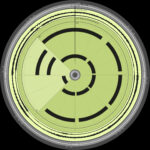YouTube is filled with today’s guitar virtuosos, displaying incredible skill and creativity that pushes musical boundaries. However, many are unaware that the guitar, or its predecessors, boasts a history stretching back to ancient times. The precise Guitar Origin remains shrouded in mystery, yet its lineage can be traced through fascinating historical developments.
The term “guitar” itself likely derives from the ancient Greek word “kithara.” Greek mythology credits Hermes with inventing the kithara from a tortoise shell, although depictions of Apollo frequently feature him with this instrument. The kithara consisted of a wooden soundboard and a box-shaped resonator. Two hollow arms extended from the resonator and were connected by a crossbar. Initially, it had three strings running from the crossbar to the lower end, passing over a bridge on the soundboard. Later versions expanded to as many as twelve strings.
Ancient musicians typically played the kithara using a plectrum, a precursor to the modern guitar pick. The left hand was used to dampen unwanted strings and sometimes to stop strings or create harmonies. Soloists occasionally plucked strings with both hands. The playing posture and use of a strap were similar to modern guitarists.
 Ancient Kithara Instrument
Ancient Kithara Instrument
Delving Deeper into Guitar Shape History
Guitar Shape Evolution: From Prehistoric Times to the Middle Ages
To understand the guitar origin, we must explore its ancestral instruments, the oud and the lute, which predate written history. Legend attributes the oud’s design to Lamech, Noah’s grandfather and a descendant of Adam and Eve. Inspired by the form of his deceased son’s body hanging from a tree, Lamech conceived the oud’s shape. The Moors introduced the oud to Southern Spain in 711 AD.
Shape Transformations: 15th Century to the Present
The lute, characterized by its rounded back, existed in various forms. Its journey spanned from Egypt to Greece and then Rome, from where it spread across Europe. The earliest visual representation of a lute-like instrument dates back to 3500-3200 BCE in Mesopotamia (modern-day Nasiriyah City, Iraq). This ancient image portrays a woman on a boat, her hand placement indicating she is playing a stringed instrument.
Pictorial records throughout Mesopotamian and Egyptian history showcase both long-necked and short-necked lutes. Museums like the Metropolitan Museum of New York, the Philadelphia Museum of Art, the Cleveland Museum of Art, and the British Museum house numerous examples of these depictions on clay tablets and papyrus.
By the Renaissance’s end, the lute had undergone considerable development, sometimes featuring 20 to 30 strings. However, its characteristic shape began to wane in popularity. During the 15th and 16th centuries, Spanish musicians increasingly favored instruments with the curved shape we now recognize as guitar-like.
These instruments, known as Baroque guitars, effectively supplanted the lute as the preferred stringed instrument for musicians from around 1600 to 1750. Improvements like five courses of gut strings and movable frets enhanced their playability.
The vihuela, popular in Spain, Portugal, and Italy during this period, featured an hourglass shape with inward-curving sides. Mariachi ensembles still utilize a modern variant of the vihuela today.
The Spanish guitar’s evolution largely stabilized by the 1790s. These guitars featured a standard body shape and six courses of strings, resembling the modern guitar but smaller in size. Antonio de Torres Jurado, a Spanish musician and luthier, revolutionized guitar design in the mid-1800s. His innovations are considered foundational to all subsequent guitar development, solidifying his status as a pivotal figure in guitar origin and history.
Torres Jurado broadened the guitar body, thinned the belly, and increased the waist curve. He also replaced wooden tuning pegs with geared machine heads. His groundbreaking approach to body construction and fan bracing—the internal system of wooden supports—gave his classical guitars their distinctive, resonant sound.
Influential Spanish guitarist Andrés Segovia championed Torres’ classical guitar as a concert instrument. Segovia’s complex compositions are now recognized as defining works of the “classical guitar” repertoire.
Around the same time, European immigrants introduced a steel-string version of the Spanish guitar to America. This marked a new chapter in guitar origin and evolution, leading to the development of flat-top, archtop, and modern electric guitars.
The Rise of Modern Guitars
The flat-top acoustic guitar remains the most prevalent acoustic guitar type almost two centuries after its inception. Christian Frederick Martin, a German-born American luthier, is credited with its creation. Martin replaced traditional fan bracing with X-bracing, enabling the guitar body to withstand the increased tension of modern steel strings, which had posed problems for older Torres-style guitars.
The taut steel strings of the flat-top guitar also necessitated a change in playing techniques, with guitarists increasingly using picks. This shift fundamentally altered the music produced on these instruments. Classical guitar melodies are known for their precision and delicacy, while steel strings and picks facilitated brighter, chord-based music. The growing use of picks also spurred the development of the pickguard, now a standard feature below the soundhole on most flat-top guitars.
Orville Gibson is widely recognized for creating the archtop guitar. This design incorporates f-holes, an arched top and back, and an adjustable bridge, enhancing the instrument’s tone and volume. Gibson modeled his guitar bodies after cellos to achieve greater sound projection. Jazz and country musicians quickly adopted archtop guitars, and they became essential instruments in big band and swing ensembles alongside flat-tops.
George Beauchamp and his partner Adolph Rickenbacker secured the first patent for the electric guitar in 1931. Simultaneously, numerous other inventors and luthiers were working on electric versions of these instruments. Les Paul pioneered the solid-body guitar for Gibson Guitars, and Leo Fender invented the Fender Telecaster in 1951. The Fender Telecaster, Gibson Les Paul, and Gibson SG models collectively represent the culmination of guitar origin and evolution, transforming the guitars of the past into the solid-body electric guitars still prevalent today.
Sources
https://www.ancient.eu/Kithara/
http://www.guitarhistoryfacts.com/guitar-inventor/antonio-torres-jurado/

